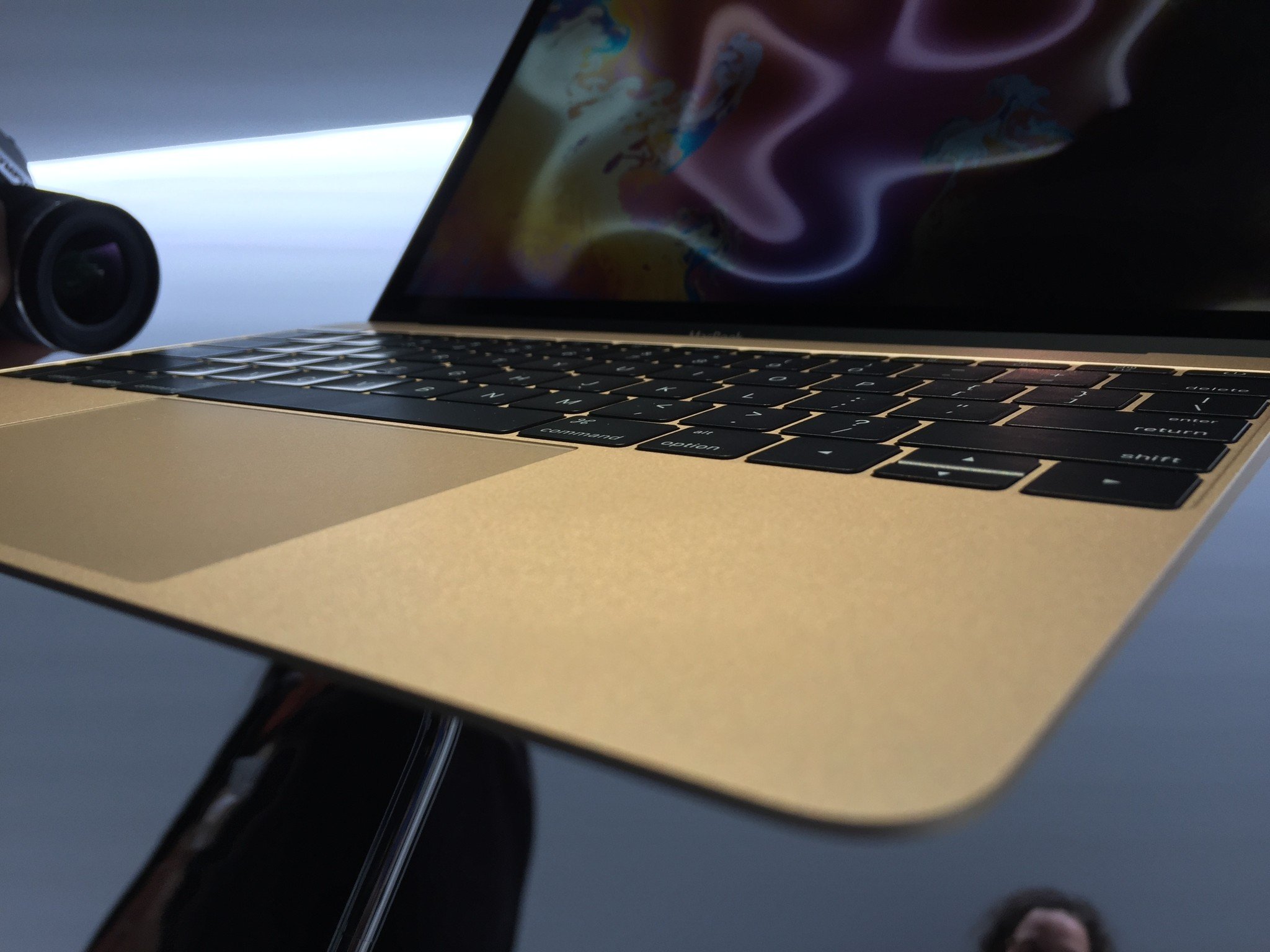Forget Force Touch trackpads — I want a pressure-sensitive iPad Pro

I got to spend just twenty minutes with the new MacBook trackpad on Monday, but it was enough to leave me feeling wowed, impressed, and a little bit disoriented.
Apple's long-in-the-making Force Touch trackpad uses haptic feedback to make your finger feel like it's depressing a button, even though the trackpad itself doesn't move. It's a sheet of glass. It doesn't have a button, it doesn't all depress at once — it does not move at all. But it feels like you're clicking. It feels like your finger is sinking into that immoveable glass and accessing deeper click levels than have ever existed on a trackpad.
Now, think about what Apple could do with that technology on a computer made entirely of glass.
What haptic engines do, in a nutshell
If you're confused by Apple's trackpad sorcery, here's the deal: There's a sheet of glass. Under that sheet of glass are a series of motors that, when you press against the glass, react with different vibrations depending on how hard you're pressing. Press lightly, you may get a light click or no click at all. Press down hard, and you may go through three or four click levels to result in a different action than your traditional single-click.
It feels like you're clicking, but you're not. Your finger is just pressing into stationary glass while the motors send little vibrations to make you feel like you're moving the trackpad downward. It's bizarrely wonderful to interact with, and opens up the door for more "Taptic" (haptic + tapping) feedback on Apple's other product models — the iPhone and iPad, for instance.
A haptic iPad would be incredible for business
I've never loved typing on the iPad: Tapping on glass, though doable, feels inherently stiff and cumbersome. To combat this, smartphone-maker BlackBerry tried a different approach, making the entirety of the BlackBerry Storm screen clickable — but it didn't work out so well in practice.
Apple's not going to make a 7- or 10- or even 13-inch iPad screen clickable. But Force Touch and a pressure-sensitive Taptic engine could make it feel like they're clickable, and that makes all the difference.
Master your iPhone in minutes
iMore offers spot-on advice and guidance from our team of experts, with decades of Apple device experience to lean on. Learn more with iMore!
Imagine an iPad where, as you type, each key feels like you're pressing it into the screen. Apple could theoretically make a virtual keyboard feel like the sensation of typing on a real keyboard, just with haptic feedback. Let alone other interactions — buttons becoming tappable, new vertical gestures unlocking different kinds of pop-overs and secondary menus, and more.
Artists rejoice
Of course, the haptic feedback is only one part of the puzzle for me: Apple's Force Touch works because not only is the trackpad hooked up to haptics, but it senses pressure. "Pressure-sensitive drawing" is highlighted as a feature on the MacBook page, though it only shows Preview's signature field as an example for the time being.
But in my brief testing with that field, the trackpad is indeed pressure-sensitive. Perhaps not to the level of a Wacom tablet, but it's precise and feels natural — and that's just with a quick test using my fingers. On a trackpad, this is exciting; on an iPad — with, perhaps, accompanying Apple Pen? — this becomes crucial.
The iPad has never had screen-based pressure sensitivity. Apps and styluses that provide it use software trickery to imitate pressure, but it's often variable between apps and inconsistent during the drawing process. The iPad's screen was designed for capacitative touch, not styluses or pressure, and it shows.
But an iPad screen designed specifically for pressure-sensitivity would go a long way in the artistic community — as well as anyone looking to write or annotate. Imagine being able to actually feel the texture of what you're sketching through haptic feedback, and control your line width. On the music side, imagine being able to feel virtual keys on a piano, or physically feel a record scratch. There's a lot of possibility here, and it's incredibly exciting on all fronts.
Will it happen? (And when?)
From the outside, the jump from Taptics in the Watch to MacBook seemed absurdly fast — just six months since the Watch's features were announced. But Apple has been working on this technology for years; the company just hasn't been happy enough with it to include in a shipping product.
That said, I'm still not sure Apple has the Taptic engine working properly in a full iPad screen just yet. It might make more sense to include it in the iPhone first before tackling the larger screen, as The Wall Street Journal rumored on Tuesday.
Even if engineers have figured out the 10- or 13-inch glass screen hardware puzzle to their liking, there's still software to think about: Haptics work because they're programmable, and there's an awful lot of programmable content in iOS. Do all buttons get haptic feedback? Does Force Touch make an appearance for contextual menus? Do developers get access to APIs for the Taptic engine to include their own haptic feedback?
Lots of questions, with few answers: Such is the speculation game. But I have hope. After all, those iPad Pro rumors make a lot more sense when you add in haptic feedback and full pressure-sensitivity in the screen.
Serenity was formerly the Managing Editor at iMore, and now works for Apple. She's been talking, writing about, and tinkering with Apple products since she was old enough to double-click. In her spare time, she sketches, sings, and in her secret superhero life, plays roller derby. Follow her on Twitter @settern.

